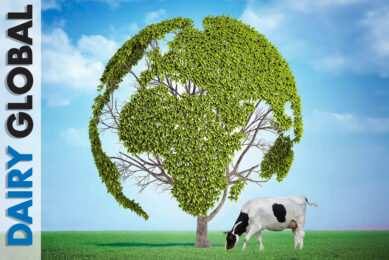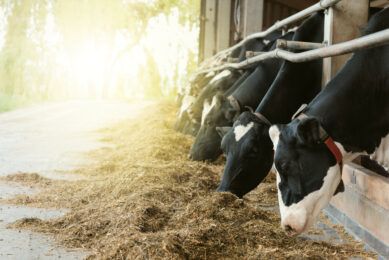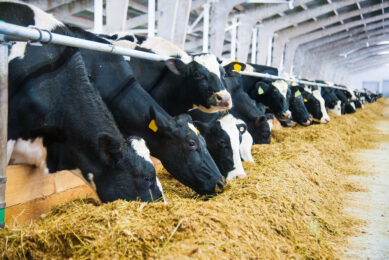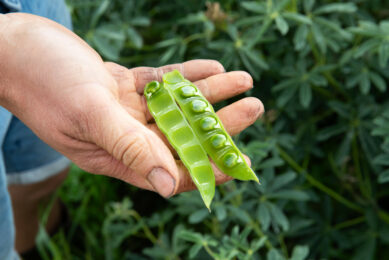Danish dairy farmer reduces reliance on feed and protein
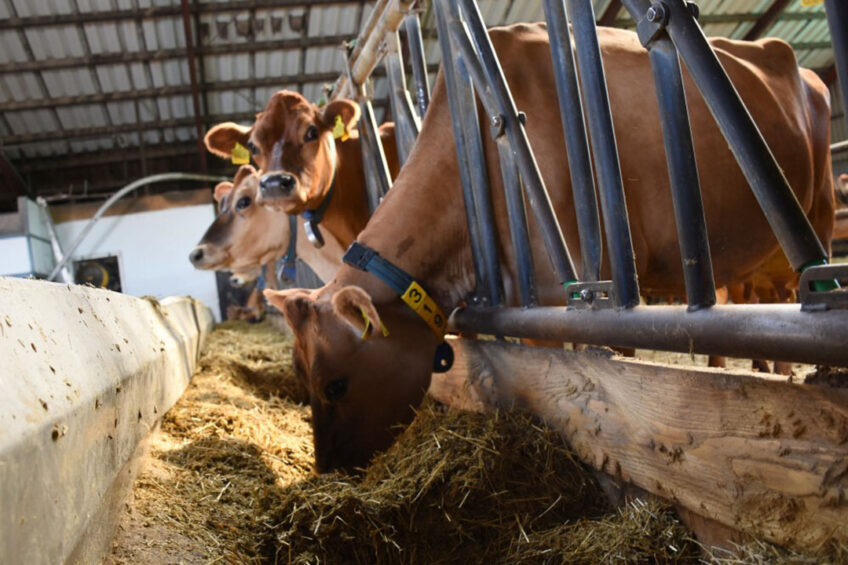
To offset his costs and be more self-sustainable in feed production, a Danish dairy farmer is growing the majority of the crops required for the herd on his farm.
While dairy farmers worldwide continue to receive high prices for their milk, they are also paying out heavy expenses for feed and energy.
That’s why 72-year-old Holger Hedelund Poulsen has been growing as much of his feed requirements as possible, saving money on costs, which has been a real benefit these past few months.
Even now in his 70s, and with no dedicated succession plan for the farm, Holger shows no signs of slowing down his milk production. In fact, he talks about continued investment into the farm and his cows.
Karen and Holger run their Jersey cows plus heifers and calves at their Ejer Mollegard farm.
Back in 1972, when Holger took over the farm, it was 15 hectares with 17 cows. Today it has expanded to 270 hectares, of which 125 are leased.
Back then there were around 100 dairy farms in the area, but today, in trends replicated all over the world, those dairy farm numbers have fallen to just 2, albeit with increased cow numbers.
Milk yield and replacement stock
For the past 14 years, 3 DeLaval robots have milked the cows on Holger’s farm, which yield 11,000 kg per year. With labour availability a constant issue on Danish farms, the robots have proved their worth year after year, milking the cows an average of 2.95 times per day. Indeed, Holger and 1 worker supplies all the labour required on the farm with a part-time assistant drafted in when necessary during the busier periods.
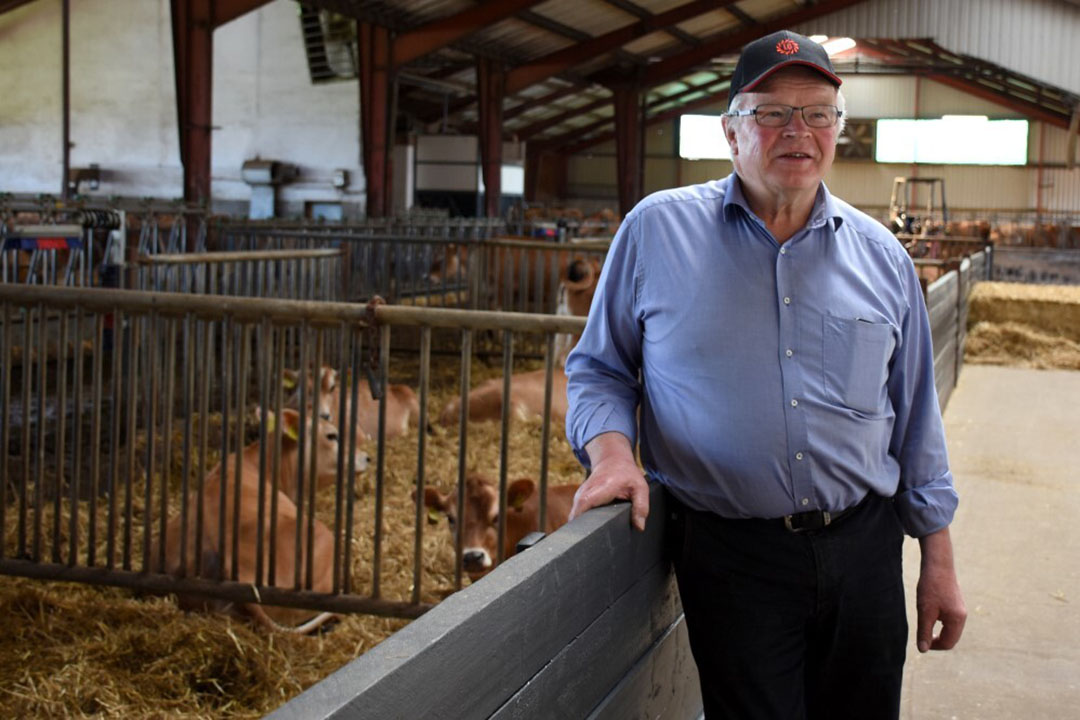
Holger runs a specific breeding programme on the farm which also sees him export heifers to other parts of Europe.
“I use sexed semen from Viking Genetics on the Jersey heifers to produce my replacement stock,” comments Holger. “Half of the heifers are exported for breeding and I keep the other half,” he says, adding that sexed male semen from Aberdeen Angus bulls is used on some of the older cows. These calves are sold at around 8-10 weeks.
“The herd’s average lifetime yield is 50 tonnes over 4.5 lactations with 0.8 calvings per year. The milk is sold to Arla and is currently returning DKK5 per litre, or €0.65 per litre.
“There is always very strong demand for my heifers from other farmers. Normally, I sell them, robot-ready, at 1.5 years old in calf for around €1,500 each to customers in the Netherlands and Germany. I normally cull my main herd cows at 7 years old after having yielding 5 lactations,” he says.
Reducing reliance of feed and protein
Since starting to farm over 60 years ago, Holger has wanted to make his business more sustainable, and reducing his reliance on feed and protein imports was very much part of his plan.
Today, he grows over 80% of the feed requirements for his herd on the home farm, greatly reducing the carbon footprint in the process.
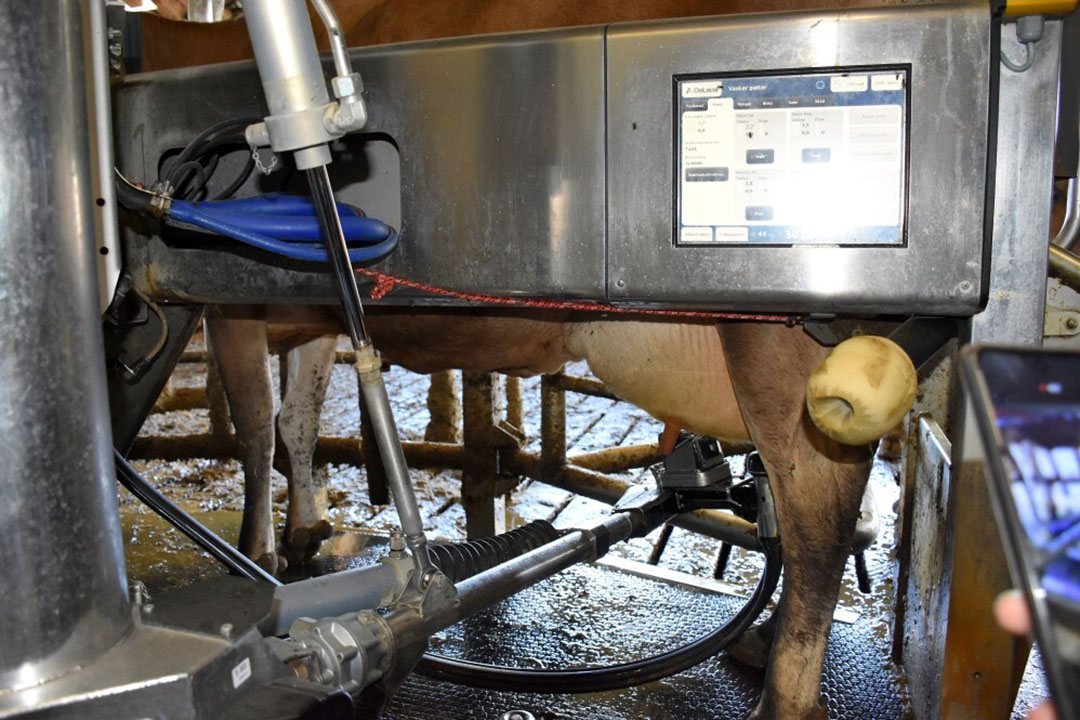
The herd is split into 2 groups, being young cows and older cows, and are fed accordingly in the shed and at the robotic milker. Only the dry cows and younger stock can graze outdoors.
“We make 4 cuts of silage each year,” Holger says. “Plus we grow a range of other crops to feed the cows. Right now we are around 80% self-sufficient in terms of our feed production.
“We still have to buy in some protein but I grow about 66% of what I need in terms of that as well. The rapeseed and fava beans are vital crops for us. Both whole and ground rapeseed and ground beans are included in the diet roughage while grain is mixed on the farm with protein, which we still need to purchase.
Crops such as maize, grass, barley, wheat, rye, rapeseed and fava beans are grown on the farm with around half of it sold to other farmers.
Holger is also a pretty influential voice when it comes to the dairy industry in Denmark.
“On average our feed costs alone work out at 15 euro cents per kilogramme of feed,” he adds.
Holger is a big believer in utilising technology to make his farm and herd even more efficient. Every piece of data generated by the milking robots is analysed and action is taken if improvements could be made.
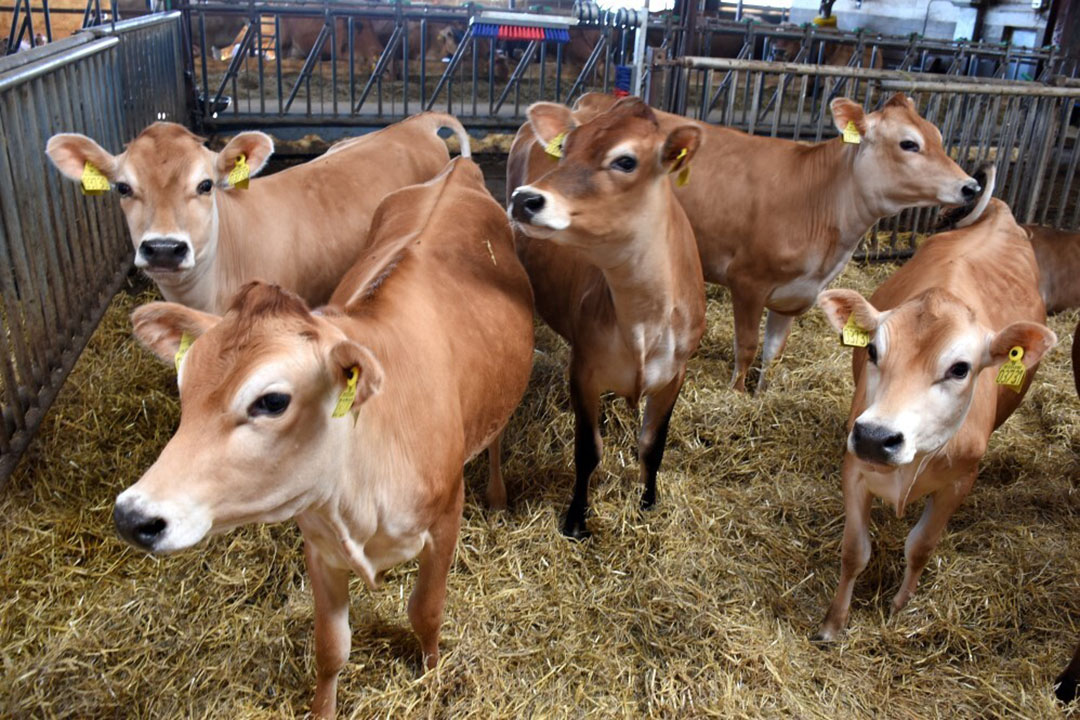
“Farmers can increase their herd yields per working hour by acquiring knowledge and new technology,” he states. “And that helps to save on costs and increase profits.”
Holger is also a pretty influential voice when it comes to the dairy industry in Denmark.
When Arla launched Kaergarden, which is basically Lurpak butter mixed with vegetable oil, Holger acknowledged the initiative but was quick to criticise the co-op for using imported soya oil rather than locally produced quality rapeseed oil.
Then, 3 weeks later the dairy had taken on board his concerns and the new products were manufactured solely by locally produced oils.
Join 13,000+ subscribers
Subscribe to our newsletter to stay updated about all the need-to-know content in the dairy sector, two times a week.



